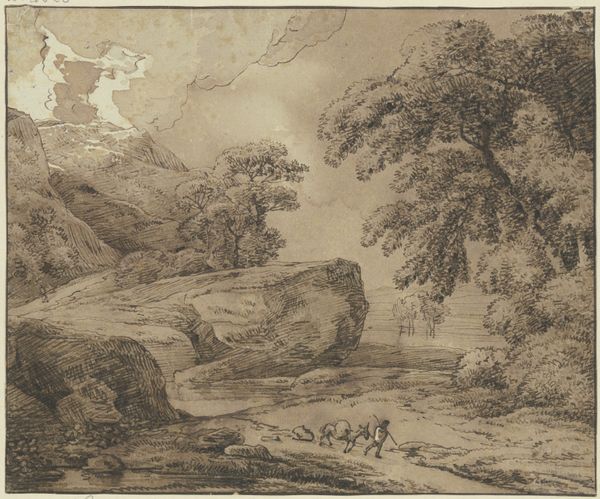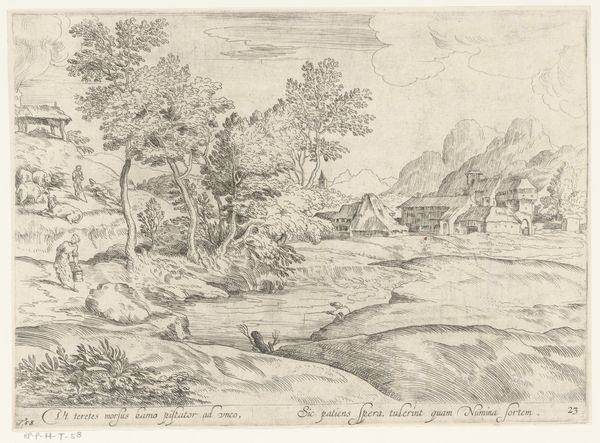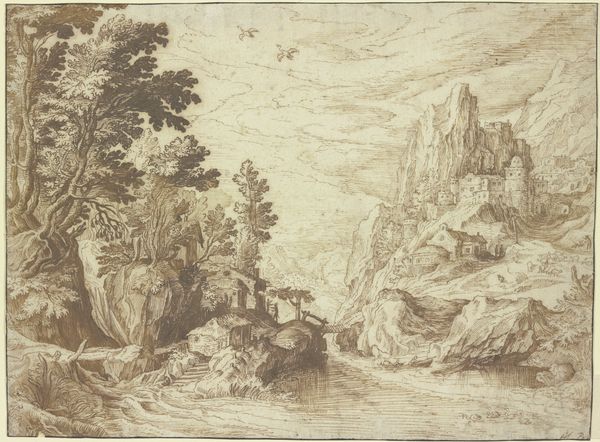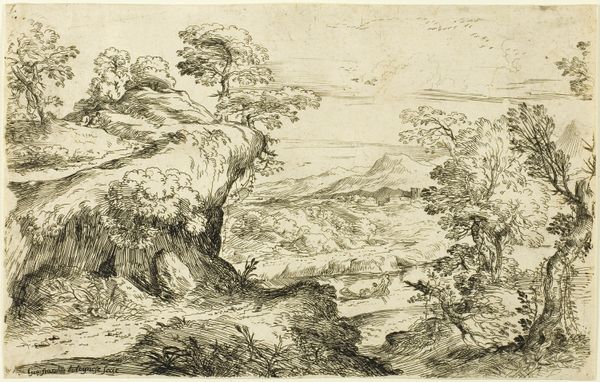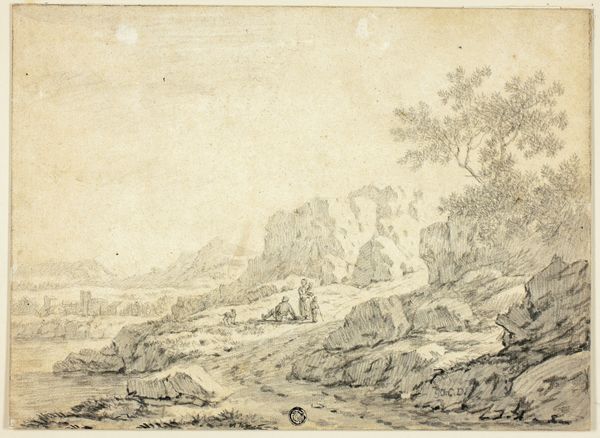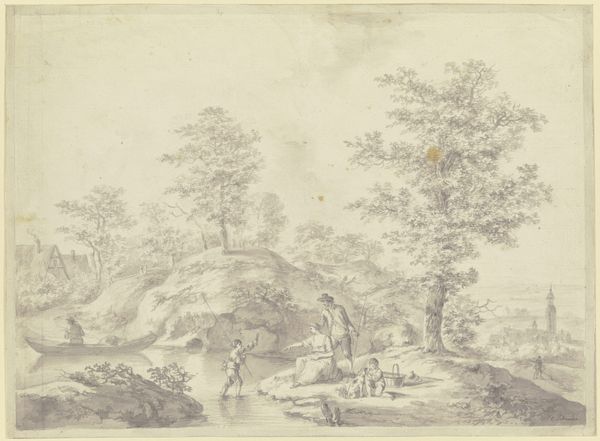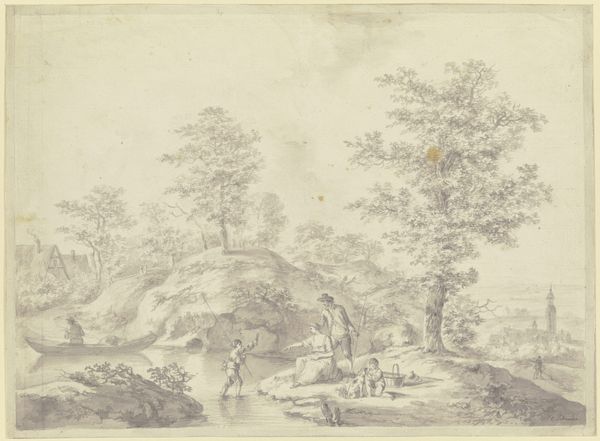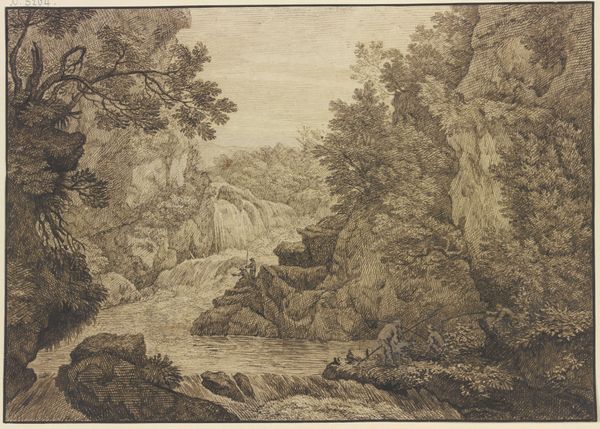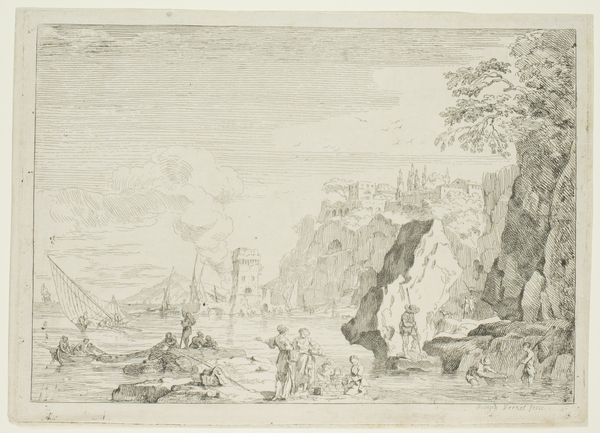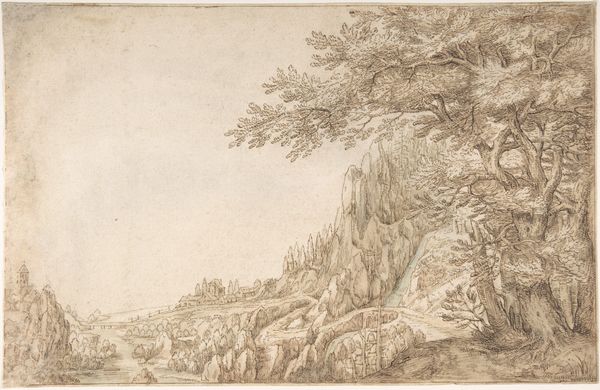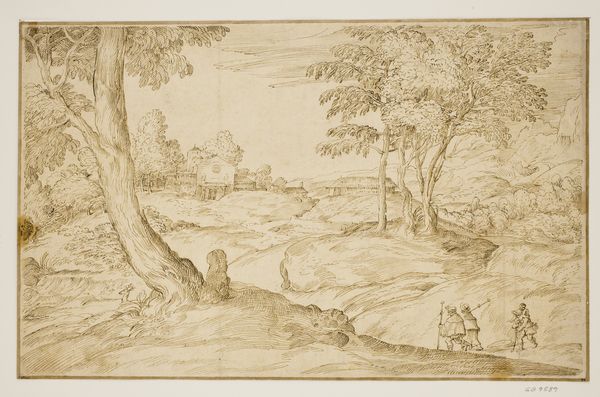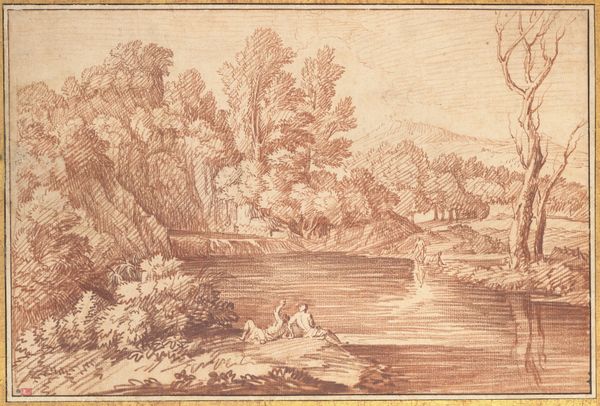
drawing, paper, ink, indian-ink
drawing
venetian-painting
landscape
etching
paper
11_renaissance
ink
indian-ink
Copyright: Public Domain
Editor: Here we have Domenico Campagnola’s "Landscape with Castle, Watermill and Village Houses," an ink drawing on paper. There’s a sense of depth, even in the monochrome tones, with a small group of people sketched in the foreground. What strikes you when you look at it? Curator: It's interesting to consider this landscape not just as a visual scene but as a document of land ownership and social hierarchy during the Renaissance. Notice the strategic placement of the castle overlooking the village. It suggests a clear power dynamic, right? How might the lives of those villagers have been shaped by the presence and authority of the castle? Editor: So, the landscape isn't just pretty; it's political? Curator: Precisely. Campagnola wasn't simply capturing a picturesque view. He was subtly, or perhaps not so subtly, encoding social and economic realities into the very fabric of the landscape. The watermill, too, represents a source of labor and control. Who owned it, and who benefited from its operation? These are crucial questions when interpreting such a work. It speaks volumes about who has the privilege to leisure, like those resting in the foreground, versus those performing labour. What do you make of the scale? The tiny people versus these large buildings. Editor: It emphasizes the castle’s dominance, the small people make the landscape monumental. I hadn't really considered how much the composition tells us about power. Curator: Consider also, what kind of access people had to nature? Who got to wander through this landscape? Whose land was it? These images are always shaped by who's behind the pencil, deciding what to include, what to emphasize. Editor: This has made me realize how much art can reveal about social structures, even when it appears to just be a simple landscape. Curator: Exactly. It encourages us to consider art as a reflection of power, class, and social identity. The personal *is* political, after all!
Comments
No comments
Be the first to comment and join the conversation on the ultimate creative platform.
